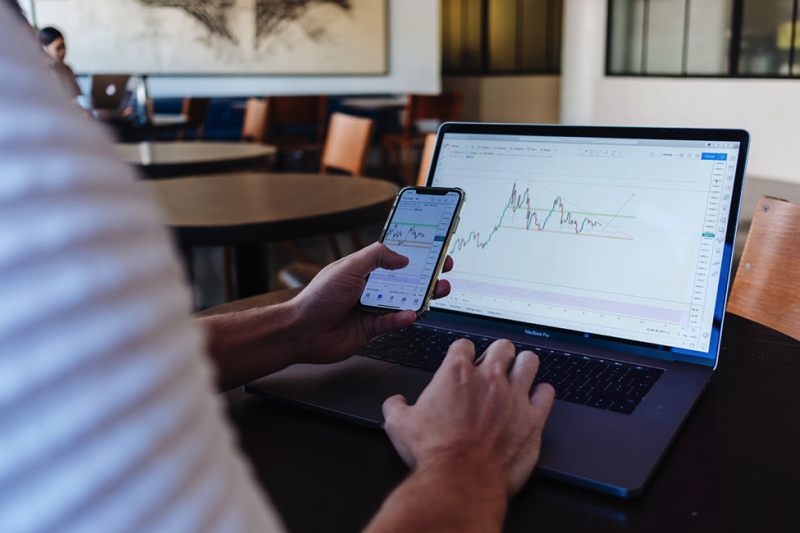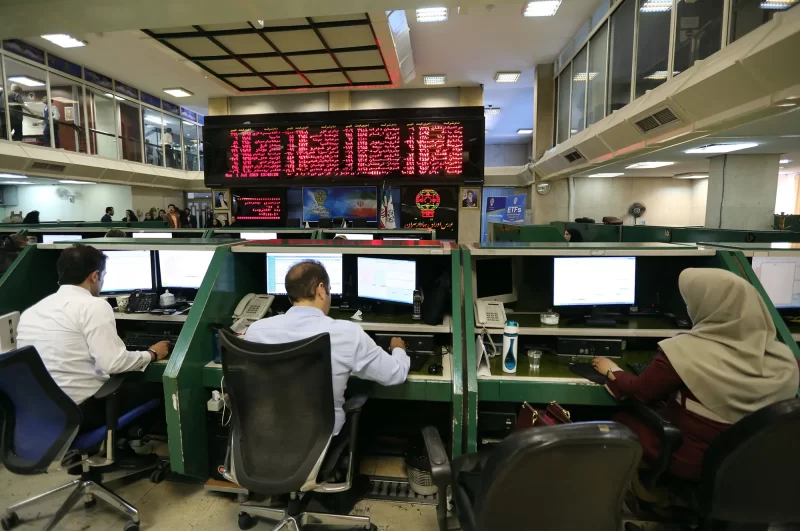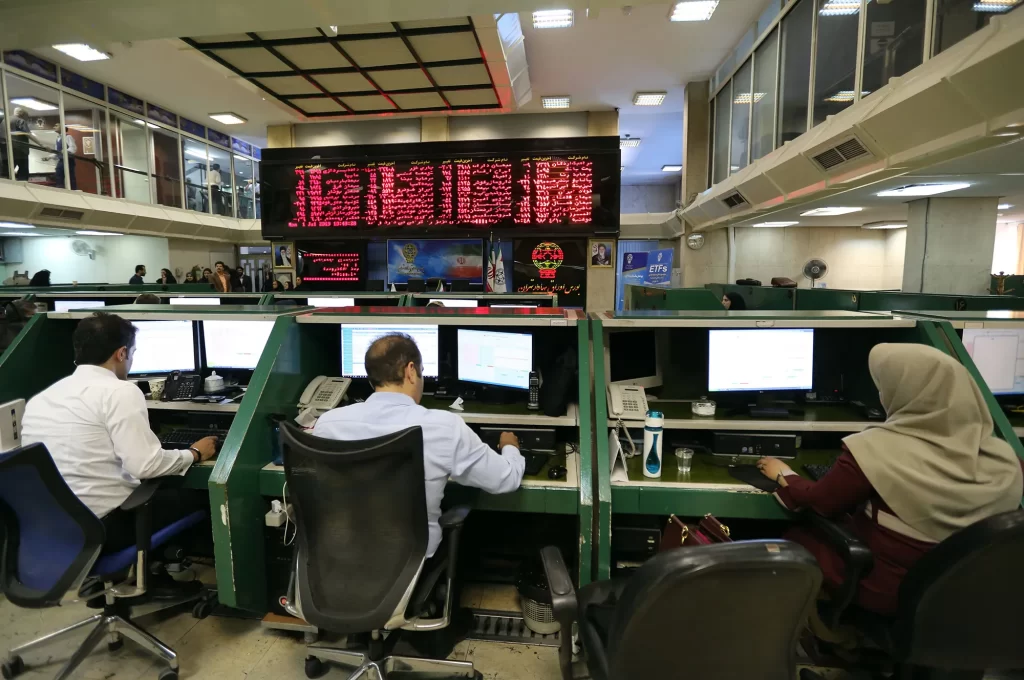
When the value of a stock declines, the opposite happens with the value of put options. The put enables the owner to secure a prearranged price to sell a given asset, and put sellers concur to purchase the stock at the specified price.

The attraction of puts is in the fact that their worth can rise fast on a tiny move in the price's stock. And that is the appeal for investors searching for methods to make fast profits.
The alternative concept is the call option. This is a more popular option type, where its price gains in value as the stock rises.
Also Read: Basic Options Trading Strategies You Need to Know
Contents
- Put Options Explained
- Selling a Put Option
- How to Sell Put Options
- Buying a Put Option
- Why Should Investors Sell Put Options?
- Benefits of Selling Put Options
- Risks of Selling Put Options
- Put Options vs. Call Options
- Buying a Put Option vs. Short Selling
- Conclusion
- FAQs
Put Options Explained
Options are a derivative, meaning financial instruments whose worth gets obtain from a divergent underlying asset. We will explore stock options, and learn how to use them for best market returns.
In a nutshell, a put option is a form of a contract that grants the option's owner the right, but not the obligation, to sell a particular stock at a prearranged price, which gets referred to as a strike price, in a specific time period, known as the expiration.
However, the privilege to have a way out of the contract, if things don't develop as planned, comes with a price tag. In other words, the purchaser has to pay the put seller a premium for every share in the contract.
Every contract is a bundle of 100 shares of the given stock. And traders are not required to possess the stock to purchase or sell the put.
When a trader's analysis of the market situation, indicates that a specific asset will decline soon, they may choose to buy a put option, rather than short selling the stock. And if the investor believes the underlying stock's price will remain flat or climb, the investor can decide to sell the put option.
But in the case of the put buyer, if the stock displays the expected behavior, and is moving in a position that can offer gains for the investor, they can implement the put option or sell the stock at the strike price.
It should get noted that there are two option types and they are European and American. In the European style, the options can get exercised on date of expiration. While the American style makes it possible to implement the option at any time up to the date of expiration.
Selling a Put Option
Put writers are required to purchase a specific stock at the strike price. This forces the put seller to have sufficient funds on the account or margin capacity to acquire the stock from the put buyer.
Yet, a put option usually is not going to get implemented barring the stock price is under the strike price. Put sellers typically hope the current stock price will stay flat or go higher. Put sellers place a bullish bet on the stock aiming to create profit.
If before expiration, the stock goes under the strike price, the option is in the money. The seller can put the stock and is obliged to purchase the asset at the strike price.
But when the stock remains at the strike price or over it, then the put is out of the money. In this instance, the put seller keeps the premium. The seller can create another put on the stock when attempting to make a profit.
How to Sell Put Options
Selling put options is not possible without a brokerage account, this is the initial move for any trader that believes selling put options is the proper investment strategy. Making the selection of a brokerage is not a process that investors should rash, it's important to identify the best firm, which will offer reasonable fees and an interface that suits the trader's needs.
The following step is to consider which type of security is the best choice to sell puts. Generally, investors can sell puts for ETFs and stocks. Traders must be sure that the prospective asset is in a good position to retain or improve its value.
It's crucial to know that the earnings arrive when the price of the asset rises or remains at an identical level. And money is lost when the price declines under the options strike price.
Usually, more volatile assets offer the chance for higher premiums that translate into bigger profit potential.
After a trader has selected an asset, the next stage is to determine the option's strike price and expiration date. Usually, investors can get bigger premiums for larger strike prices and expiration dates that are into the future.
When the option's strike price is larger, then the value of the stock can decline for a smaller margin for the buyer to get an income.
But it works both ways, more time between the option's date of expiration and the sell means there is more time for the stock price to decline under the strike price. The larger premiums compensate put sellers for the significant risks.
When all factors are in place, like the asset, strike price, and date of expiration, traders can use the brokerage account to make a sell order.
Buying a Put Option
Put options are a form of insurance for a trader that functions as a buyer. The investor can buy a put on an underlying asset to create a hedge and balance the risk of the price decline of stock prices because the put actually makes a profit for a fall in the price of the stock. Plus, traders are not required to own the given stock in order to buy a put.
There are traders that purchase puts to make a bet on the decline in a specific price of a stock because put options offer larger profit potential profit when compared with shorting the stock.
If the stock falls under the strike price, the put option is in the money. The in-the-money put option possesses intrinsic value, and this is due to the fact that the stock's price is smaller than the strike price.
The trader is faced with two options. In the first case, if the investor owns the stock, the contract for the put option contract can get exercised.
Putting the stock at the strike price to the put seller. This shows the security that the put offers because if the stock's price declines, the put buyer can sell the shares at the bigger strike price, and not at the reduced price of the market price.
The other option is for the trader to sell the put before expiration with the intent to get the value, and not be forced to sell any assets.
If the stock remains at the strike price or goes over it, the put is out of the money. In this case, the option expires worthless. The put seller gets to retain the paid premium paid on the put but the entire investment of the put buyer is lost.
Why Should Investors Sell Put Options?
There are several reasons for a trader to incorporate the selling of put options in their strategy. Before starting to use put option it’s important to understand every factor that influences the option contracts, that why you are ready for any eventuality and will be on the correct path for making profits. We are going to examine a few of them.
Make a Profit
Investors have one goal, and that's to make money. Not surprisingly, put options are one method they use to generate profits. When selling a put option, the trader interested in purchasing the option will compensate the owner with a premium.
This means if the interested party in the deal, aka the buyer, loses interest in the option, the seller is allowed to retain the paid premium. Naturally, the bigger the premium, the more money goes into the seller's bank account.
The earning is equal to the whole premium when the buyer refuses to exercise the option. But if the buyer goes through with the purchase of the options contract, then the seller will get a sum that equals the market price minus the strike price multiplied by 100, which is the number of shares in a contract. However, there is a potential for a loss if the market price changes in the meantime.
Selling put options on an asset that is believed will keep its value or rise, can bring in profits with reduced risk.
Buy Shares When They Reach a Set Price
Long-term traders research various stocks and decide their real worth and the price they are prepared to pay for the shares. Selling put options enables investors to get into the market and purchase a stock that has declined under a set price.
For example, if ABC is selling for $1000, and you are confident that you will purchase the stock at $90, then you can sell put options at a strike price of $90. If the stock declines under $90, the holder of the option holder will probably exercise the option, and you can repurchase the shares at $90.
The bonus of this approach is that traders can make a profit from selling puts, before the share price move towards the amount the investors are prepared to buy shares. The disadvantage is that if the price declines under the target price, the investors are overpaying for the shares.
In the previous example, if the stock declines to $80 per share, the investor will have to pay $90 per share when the holder of the contract exercises the option.
This means the trader is paying a lot more than the current going market price. Yet if considering keeping the option long-term, the investor can make an income when the value of the stock rises.
Benefits of Selling Put Options
There are numerous advantages for investors that are selling puts. Knowing these aspects can motivate and guide investors in the proper implementation of put option in the market.
Profit in a Sideways Market
When investing in one company, then the profit potential rolls around if the company stock gains in value. The pros of selling puts are that traders can use the tactic to make an income even when the stock's price declines.
Investors get a premium when trading with put options and are planning to sell the contract. While the contract's strike price is under the present market price, the buyer will not use the option if the price remains stable, staying over the strike price.
This offers traders more choices for making a profit on a return than purchasing the shares.
Reduced Risk
The unlimited risk is the problem with options strategies. That makes a lot of investors stay clear from them, especially inexperienced traders. But similar to covered calls and other strategies for options, the risk with selling puts is limited.
If the market price of the asset declines to zero, most traders can lose from selling a put option equals the number of contracts' strike price minus the premium received.
This is a significant risk when compared to the risk traders take when purchasing 100 shares of the given asset at market value. However, investors cannot lose more than the value of the shares they are committed to buying.
Appreciation Potential
In the case a put option buyer implements the option and sells the shares over the market value, you can retain the shares. Traders can incorporate the shares into their portfolios by managing them as part of the investment strategy. Investors are not required to sell them immediately to honor the contract.
It is quite reasonable to keep the asset for the long term and patiently expect the moment went the price will rise. That way, you can sell the shares when the price appreciates. And retrieve the losses you have sustained on the option, even make a profit.
Risks of Selling Put Options
It may seem profitable, but as previously mentioned there is a fair dose of risk in selling puts. Investors must learn the potential pitfalls to safely navigate put options trading.
Leverage Increases Potential Losses
Investors can use strategies that involve options to leverage their portfolios. Assuming control over a large number of shares at a reduced price.
It’s typical for an options contract to include 100 shares of an underlying stock, but the cost of those shares will be significantly smaller than if they got traded individually. When leveraging the portfolio, investors are banking on more profits. Yet there is room for more losses if the strategy is unsuccessful.
The surprising thing for many beginners is that a change of a dollar in the stock's price can result in a loss of hundred dollars from one put option if a buyer decides to exercise it. Because of that, it's crucial to be ready for significant losses.
Margin Calls
A potential significant risk in using leverage with puts is the risk of a margin call.
Brokerage firms are interested to learn if a trader can pay for the shares in case an option buyer decides to exercise the contract that is why it is crucial to have the necessary fund in the account and cover the expanse. Most firms stay tuned and follow the liability of the sold put options.
Although advisory or brokerage services are keen on loaning funds, there is a limit on how much an investor can borrow. Usually, the amount correlates to the account's value.
When the market declines the investor gets stacked with a big liability because of the sold puts. The broker can respond with a margin call, in turn making the trader deposit more funds in the account to cover the liabilities.
The problem is that if the investor is deficient in funds, and cannot respond to the call, then the broker will demand the investor sells other investments. So he can cover the liability, and this can get done at a loss.
Limited Potential Profits
When selling a put, the buyer pays the seller of the option a premium. This payment is the profit ceiling from the transaction. Other strategies for options offer a more lucrative potential for profits than selling puts.
Usually, the max potential earnings from selling a put are smaller than the loss potential loss if the asset declines to a lower price. Traders that sell puts have to balance the reward and risks.
Put Options vs. Call Options
The alternative type of option is the call option. In this case, the value raises proportionally to the rise of the stock price. Investors can bet on the rise of stock by purchasing call options. In this aspect. Calls work as opposite of put options, but provide nearly identical risks and rewards:
Purchasing a call option enable traders to multiply the investment.
The risk is that investors can lose the entire investment in case calls expire worthlessly.
There is a premium for selling a call option, and it comes with risks if the stock goes on an unfavorable course.
The one significant difference between the two is that when selling a call option, the investor gets exposed to unlimited losses and loses more than the received premium.
Buying a Put Option vs. Short Selling
Purchasing put options can be appealing if you expect the stock will decline and is one way to bet counter the asset. The alternative way is with short selling. When shorting a stock, traders loan the stock from a broker and sell it on the market tied to the current market price to buy it back if the stock price falls.
Investors earn an income by pocketing the difference between the buy and sell price. Because puts generate bigger profits than shorting a stock it's more desirable for put buyers.
Let's consider two hypothetical strategies. The ABC stock gets trading at $100 per share and has a $10 premium. An investor can buy a put option with a $1000 strike price that will be expiring in four months. The options contract contains 100 shares, and one put contract costs $1000. The trader has $1000 in cash, meaning there is the option to buy one put contract or short 10 shares of the $100 ABC stock.
Conclusion
Options provide traders a method to leverage the portfolio and earn an income from situations where possessing shares by itself will not generate profits.
Although selling puts is a basic strategy, there are more reasonable options, for investors that plan to generate income from the portfolio, such as selling covered calls. When considering trading options, beginning with the less risky strategy is the best learning approach.
Selling put options is a flexible tool for producing income and entering stock positions.
Instead of purchasing shares at the present offer, traders can estimate how much they are prepared to pay for them and sell the put option to earn an income while waiting to decline to the predicted level.
There are a lot of investors that perceive options as extremely risky, and the reality is there is truth in that opinion but only if implemented incorrectly. Investors can trade options with strategies that reduce risk and make it possible to profit from the rise or decline of a stock.
FAQs
Is selling puts a good idea?
Selling puts produces instant incomes for the seller from the portfolio, who gets to retain the premium when the sold put does not get exercised by the buyer and it expires out of the money. The trader that sells put options on securities they don't mind to keep them and improve the chances for more income.
What is the downside of selling puts?
The risk for losses when selling options is limitless. Although the underlying price can't go under zero, when a trader sells a put option it will be limited to the strike price. By looking at the statistics it's easy to see that about 80% of options typically expire out of money. Because of this, the chances of making a profit as a seller are high.
Can you lose money selling puts?
When selling a put before the earnings, the investor gets a larger premium but exposes to a significant risk of a big loss if the stock of the company declines. Yet when selling a put following the earnings, the decline in the stock has occurred and the received premium will be smaller.
How do selling puts work?
When investors sell a put option, they concur to purchase an asset at an agreed-upon price. Put sellers will lose money when the price of the asset declines. The reason for this is that the trader has to purchase the stock at the strike price, yet can sell it at a smaller price. Profits get made when the stock price rises and the buyer is not exercising the option.

















